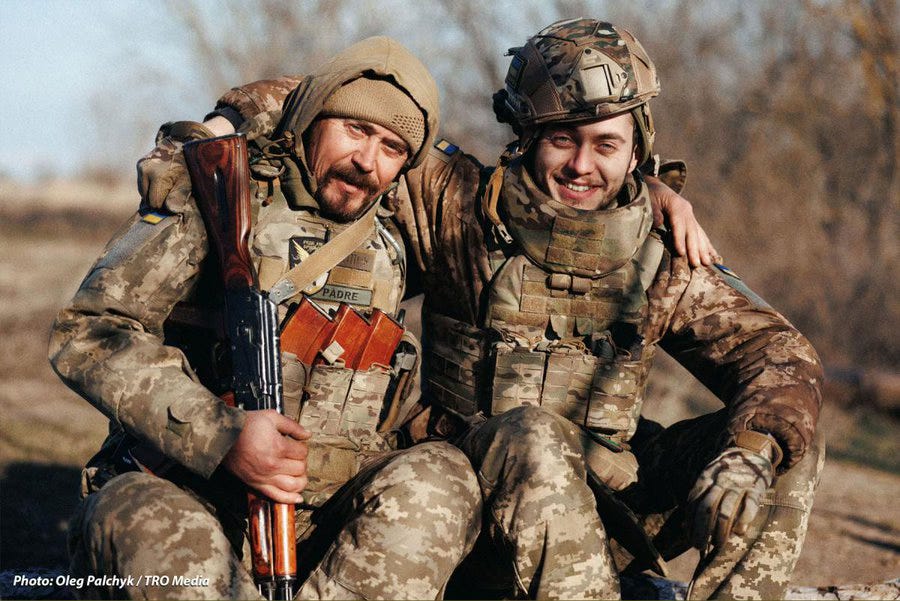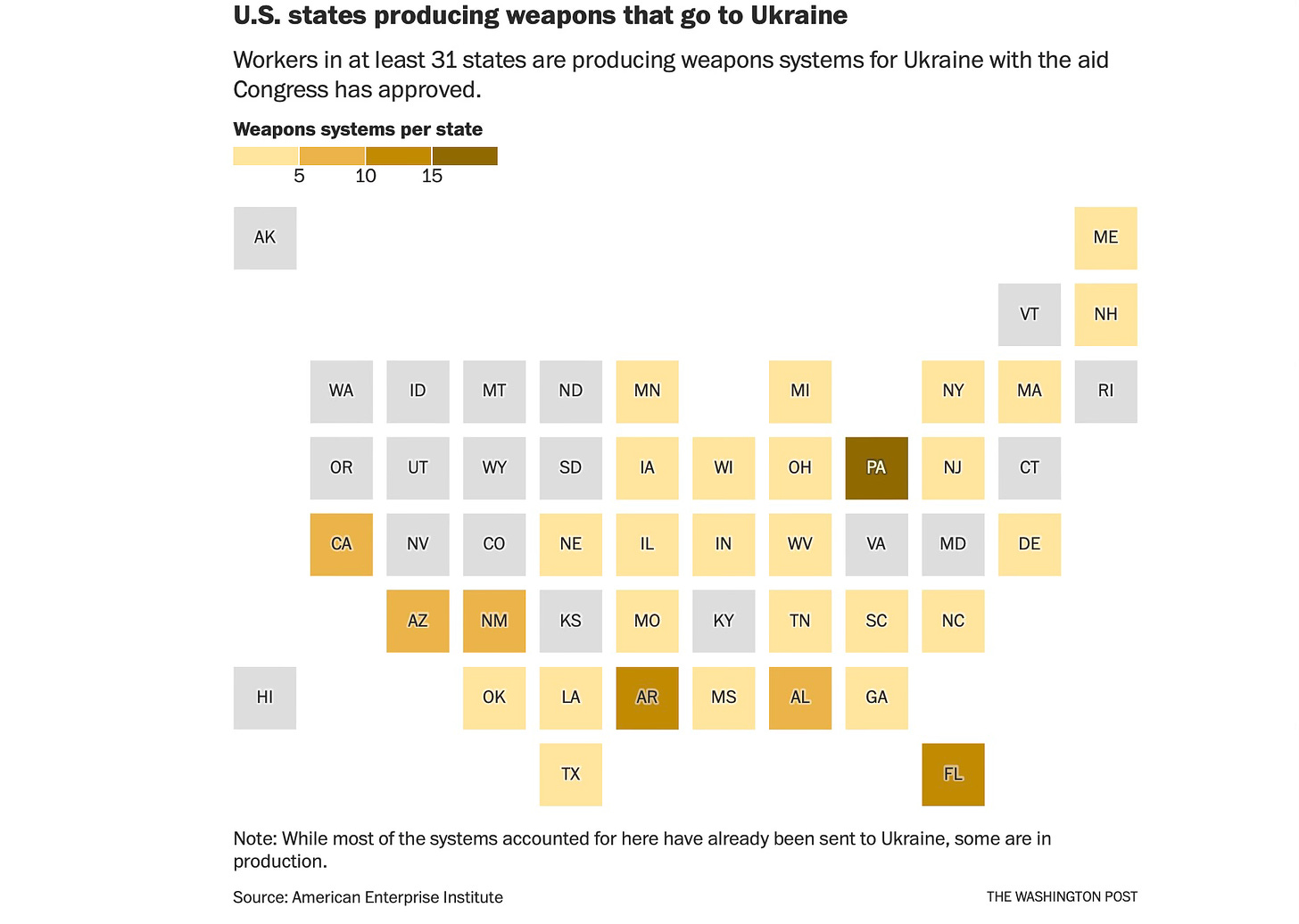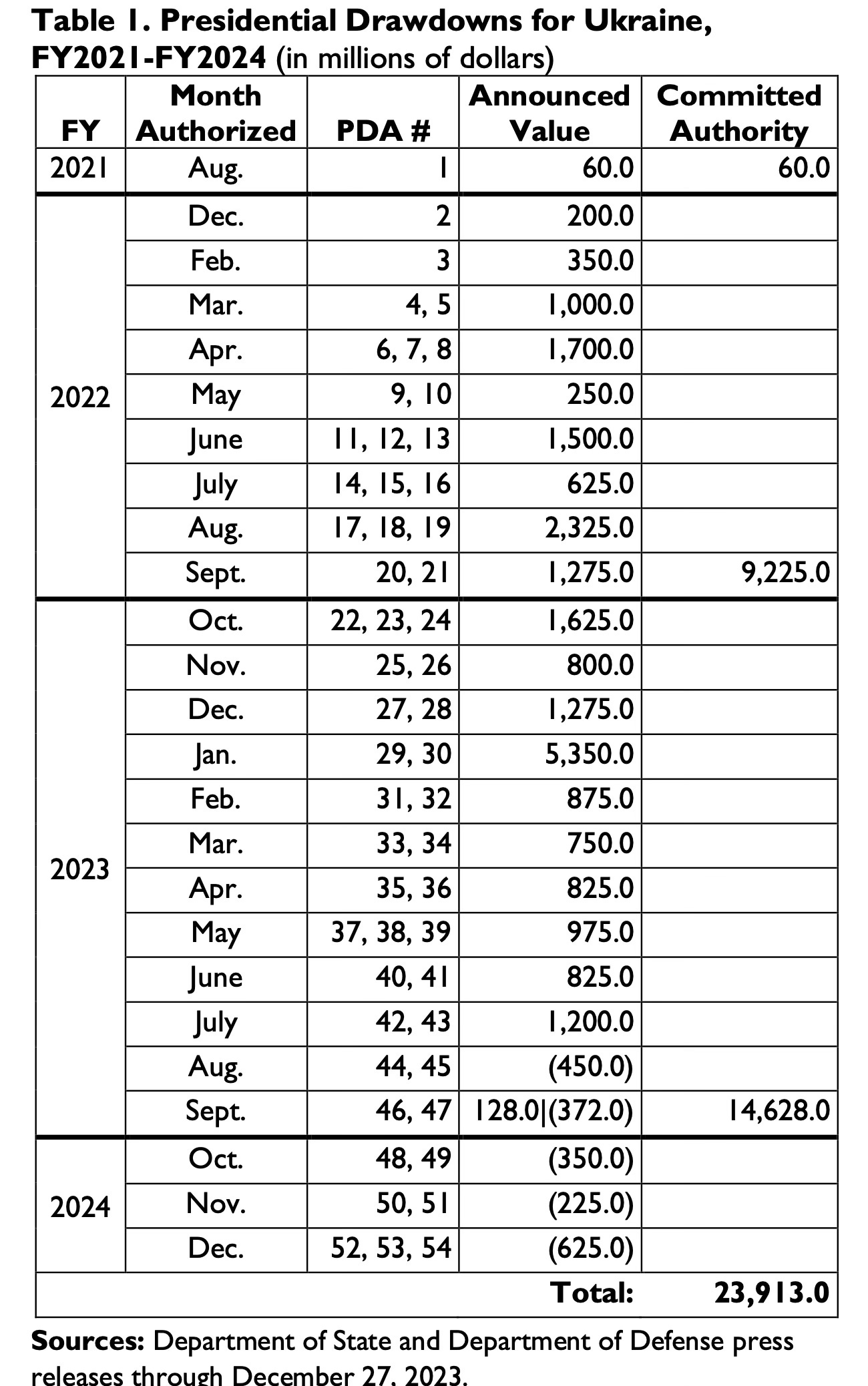The Ukraine Aid Bill Passes in the House
Now back to the Senate, the President's desk and delivery to Ukraine's soldiers
Ukrainian soldiers, like those in the image above, are the ones who will benefit most from the new Ukraine aid bill just approved.
After months of debate, lobbying and political wrangling, the house bill to provide military assistance to Ukraine has finally passed. This will be critical in providing immediate support to Ukrainian combat forces as they desperately hold off multiple Russian assaults across the eastern and southern parts of Ukraine.
The Russians in some areas have an overwhelming superiority in artillery fires, at some places having a 10 to 1 advantage. The U.S. European Command's General Cavoli has recently described how Russia's artillery advantage will double in the short term given Ukraine’s current shortages. The aid package will aid to address that situation.
But the air defence situation is also perilous. Some Ukrainian air defence units have run out of interceptor missiles under the weight of Russian aerial attacks. And, front line forces regularly face a barrage of air launched glide bombs because of shortfalls in tacitcal air defence systems - or because they have been reallocated to defend cities in the wake of other shortages there.
The shortfalls in these two categories of munitions has only exacerbated the situation with personnel shortages in Ukrainian frontline units. The fighting strength of many units sits around 50%.
The situation was recently described by President Zelensky as follows: “It’s important to specifically address the Congress: if the Congress doesn’t help Ukraine, Ukraine will lose the war.” While some of this is blatant lobbying, it is also a fact. Ukraine needs foreign assistance to defeat Russia’s invasion.
Therefore, this aid package will be a desperately needed fillup for Ukrainian battlefield capacity. It will also provide a burst of optimism in Ukraine and beyond.
Finally, it bears noting that this bill was passed at the same time as important bills supporting Israel and U.S. efforts to deter Chinese aggession in the Indo-Pacific. These will be vital in permitting the U.S. to confront what has become a single, massive threat from the authoritarian quad of Iran, Russia, China and North Korea. This threat must be faced down by the U.S. and its allies across the globe, and the funding in these bills be critical to that effort.
Additionally, a bill that was aimed at seizing and selling frozen Russian assets passed the house.
The Ukraine Aid Bill
What is in the bill passed by the house? Well the $60 billion for Kyiv includes the following:
Almost $14 billion to help Ukraine buy advanced weapons systems and defense equipment.
$13.4 billion to replenish U.S. defense stockpiles.
$7.3 billion for current U.S. military operations in the region.
$13.7 billion for purchasing U.S. defense systems for Ukraine.
The highest priority items under this bill are likely to be restocking artillery and air defence ammunition, and these items will be moved very quickly once the President signs the bill. But other less visible elements of military materiel such as spare parts for US tanks and armoured vehicles, drones, mortars, radios, engineering equipment and the panopoly of equipment required on the modern battlefield will be provided under this package.
Much of this aid money will be spent in the U.S. itself. As several recent articles have highlighted, a multitude of U.S. states and congressional districts will gain from the spending contained in the just-passed bill. You can read those reports here and here.
The money in these aid bills will be important in the further expansion of the U.S. defence industrial base. My collegue at the Center for Strategic and International Studies, Seth Jones, has done some important work on this subject recently, which you can read here.
The $7.3 billion for U.S. military operations in the region is also important. This provides for the huge logistical support that the U.S. provides to transport American aid (and that of other nations) to Ukraine. It also funds the training of Ukrainian military personnel.
This training will be very important assistance now that the mobilisation bill has passed the Ukrainian parliament. Training throughput for new Ukrainian soldiers will need to be expanded, the only way to do this for Ukraine is to outsource training to NATO countries. The U.S. plays an important role in this, as does its European partners (even Australia contributes to this).
And in 2024, training for new soldiers as well as battlefield leaders and planners at the battalion, brigade and above levels will be crucial. The provision of reinforcements to existing units, rotating units and forming new units for future operations are all priorities. But so is addressing some of the shortfalls identified in the 2023 counteroffensive, which includes better synchronisation of multi-brigade operations.
Finally, the bill directs that the U.S. President to seek repayment from the Ukrainian government of $10 billion in economic assistance. However, the President will be able to forgive those loans beginning in 2026.
The Bill Also Addresses Russian Misinformation about the U.S.
It goes without saying the Russia won’t be happy about the aid to Ukraine or the freezing and selling of its assets.
The successful passage of this bill pushes back against Russian misinformation in the U.S. shaping political debate over Ukraine and the role of the U.S. in the world. As Timothy Snyder has recently written:
Russia's one path to victory in Ukraine leads through minds and mouths in Washington, DC. Russian and Chinese propaganda therefore celebrates the inability of Congress to pass aid for Ukraine, and praises those who hinder the passage of such a bill. But the specific propaganda memes that China spreads (and some American leaders repeat) about the war are of Russian origin. Russia is the leader in this field; China is imitating Russian techniques and Russian tropes.
Russian efforts to influence U.S. lawmakers and citizens has been studied extensively and covered in multiple reports since the 2016 election. You can read recent reports on these Russian efforts here, here and here.
In short, while the passage of these bills helps Ukraine, Israel and Taiwan, it also helps the U.S. confront the strategic influence activities of authoritarian nations.
The freezing of Russian assets and selling them to assist Ukraine is likely to really, really upset the Russians. But it is an initiative that is long overdue, and possibly one that will be mirrored in other democracies in the wake of the U.S. legislation. Watch for a Lavrov outburst in the short term.
Timing Is Everything for Ukraine
The key issue now is timing. The bill has to return to the Senate and then be signed by the President this week.
The military is very likely to have done preparatory planning and may have stocks of the most urgently required military aid already in Europe. This will speed up delivery to Ukraine once the legislation is signed by the President. As this Politico article notes, “the Pentagon is preparing to quickly approve a weapons package for Ukraine that includes urgently needed artillery and air defenses as Congress lines up votes to pass additional funding for the country, according to two U.S. officials.”
There is a well established supply chain for provision of aid, and the Pentagon spokesman General Ryder has recently noted that “We have a very robust logistics network that enables us to move matériel very quickly as we’ve done in the past. We can move within days.”
But it will take some time to roll out the full quantity of this aid designed for Ukraine. It will not come in one big hit. As the table below, from the Congressional Research Service shows, over the past year, U.S assistance has averaged around US800-1,200 million dollars per month.
Even if there are surges in aid (such as 2023 January's US5 billion package for the 2023 summer counter offensive) this aid will last at least through to 2026.
The timeline for seizing and selling Russian assets is uncertain. However given the legal complexities of this, the process is likely to take much longer.
A Morale Boost
Finally, the passing of this bill will be a considerable morale boost for Ukrainian citizens and those on the front line. As President Zelensky noted in a tweet just after the bill pased, “our warriors on the front lines, as well as our cities and villages suffering from Russian terror, will feel it.” It is a major vote of confidence in the future of Ukraine.
The passing of this bill may also prompt other nations to step up their support for Ukraine. There are multiple nations besides the U.S. that have stepped up and provided very significant amounts of aid for Ukraine, including the Baltics, Denmark, Poland, Scandanavian nations, Japan, Germany and Britain. However, some nations have been laggards, including my own country of Australia. Hopefully this bill might prompt the government in the land down under to be a little more generous in supporting the survival of Ukraine.
But for now, the aim will be to get the aid bills back to the Senate and then signed by President Biden in the coming days.
Then the hard work of rapid delivery of aid, and the stepping up of U.S. military industrial production, begins.







We (most unfortunately) do not know what the outcome of the US presidential election will be, and this has 2 implications.
First, the Biden Administration may be keen to get Ukraine aid flowing faster to ensure that it is all spent in case there is a change in administration.
Second, It’s not only the ramp up of US military production that matters. Ukraine and, especially, Europe must use this lifeline to become self-sufficient in production of 155mm artillery ammunition as well as air / drone defence systems.
The US, to borrow Churchill’s phrase, finally did the right thing after they tried everything else! A repeat is not a sure thing.
Wonder how long it will take for them to come back for more …